
How Russian Disinformation Fuels US Alternative Networks on Telegram Before the Elections
Executive Summary
We have identified a network of 279 English-language Telegram channels that “challenge mainstream points of view” on the US internal issues and international politics. This includes plotting conspiracy theories and borrowing pro-Russian narratives.
Within the network there is an "interlayer" of 52 channels that amplify Russian propaganda for the English-speaking audience – we call them "conduits". The main feature of the conduits is their direct connection to Russian propaganda sources through reposts and citations. Other 227 channels of the network are tied with the conduits through 1-2 reposts.
There are cases of migration of narratives from Russian propaganda to American channels, particularly around themes of censorship and freedom of speech. For instance, the network mirrored Russian narratives about an arrest of Pavel Durov, founder of Telegram, claiming that it is a “witch hunt” on free speech. Also, Russian narratives about Ukraine receive significant attention from the network. Claims of Rothschild family influence, Ukraine’s lack of sovereignty, and its portrayal as a neo-Nazi stronghold have been echoed in English-language “alternative” media, amplifying the Kremlin official point of view to the US audience.
There are four dominant clusters within the network based on their main topics. First group, accounting for 30% of channels, predominantly writes about American internal issues like the US-Mexico border crisis, recent natural disasters (e.g. hurricane Milton) etc. The second group (25%) dedicates its content to reporting the Russo-Ukrainian war using the pro-Kremlin point of view. The third group (11%) has a strong right-wing stance and tends to disseminate conspiracy theories. The fourth group (10%) mostly covers international politics and their relation to the US. Apart from 52 conduits, these channels do not have a direct connection with Russian propaganda. However, they promote Russian narratives through reposts of the conduits’ content.
In its coverage of US elections, Russian propaganda channels that we explored also focus on Donald Trump – 43% of the content is dedicated to him. Ukraine is the second election topic in Russian propaganda outlets, with discussions about how a new US president might handle the war. Some "seasonal" topics, such as the arrest of Telegram founder Pavel Durov, are used to question Western democracy and free speech, framing the US elections as undemocratic. Such topics might be further “exported” to American channels.
Introduction
On October 3, Readovka, a Russian propaganda outlet with over 2.7 million subscribers on Telegram, stated that Michael McFaul, former ambassador of the USA to Russia, took an active role in developing the Ukrainian incursion into the Kursk region. Almost instantly, 20 minutes after the original publication, this information was echoed by a journalist Pepe Escobar – he writes on geopolitics and targets English-speaking audiences. Also, he is a frequent guest of events hosted by Roskongress – a state fund that is designed for “promoting national interests, and strengthening the image” of Russia.
At the end of the day, the same news piece was reposted by an anonymous Telegram channel with more than 147 000 subscribers – it does not have visible ties with Russian propaganda through self-identification, but it is clearly evident that it promotes pro-Russian narratives for English-speaking audiences – calling occupation of Ukrainian cities “liberation”, using an altered version of the Ukrainian flag to resemble the Nazi Germany flag, or calling Volodymyr Zelenskyy “delusional” – this is an example of the propaganda conduit. Two days later, a similar article about McFaul appeared on the worldwide-popular entertainment website 9GAG.
This is only one example of a direct narrative “export” from Russian propaganda to English-language channels. We discovered dozens of similar cases across various topics.
Some narratives shared on English-language Telegram channels originate from Russian propaganda, a process we refer to as “narrative migration”. Channels sceptical of Western mainstream media often turn to Russian propaganda for "alternative opinions". The radical critique of Western values and politics within Russian narratives appeals to the channels, making them susceptible to Russian influence, often without realising they are spreading propaganda. “Question more”, as an old advertisement by Russian state-controlled international broadcaster RT goes, featuring portraits of then presidents of the US and Iran and a rhetorical question: “Who poses the greater nuclear threat?”
In this report, we explore how pro-Russian narratives reach audiences in the US and how the Telegram network of “alternative” channels tries to influence the results of the upcoming elections.
Russian Propaganda Сonduits
There is a layer of intermediary Telegram channels that connect Russian propaganda to channels targeting the American population. Some of these intermediary channels have connections with Russian propaganda (media that share official point of view of the Kremlin – RIA, RT, Sputnik TASS, Readovka, Rybar etc.) or official sources (e.g. Russian ministries’ Telegram channels). We have called these channels “conduits” due to their amplification role for Russian propaganda. Overall, we identified 52 Russian propaganda conduit channels (“Methodology” section contains an outline of the identification process).
Conduits are important intermediaries in distributing Russian propaganda. For example, channels like Fearless John and AussieCossack made 100 and 150 reposts of Russian propaganda during the observation period – on average, this is 1 news piece per day.
Most conduits post on anonymous basis, but several are operated by well-known “Russian soft-power” influencers. Channels like AussieCossack, operated by Simeon Boikov, have a known history of pro-Russian propaganda and are involved in pushing narratives that align with Kremlin objectives. Boikov himself has become notorious for his extreme pro-Russian rhetoric, targeting Western countries, especially Australia, for their support of Ukraine. His posts were reposted by Zeeemedia and Vigilantnews channels that target an American and other English-speaking audience.
Also, among them are the American journalist Toria Brooke (Therealtoriabrooke), the Irish blogger Chay Bowes, the account Fiorelainmoscow, American journalist Fiorella Isabel, who moved to Moscow, the account ‘robinmg’ run by Italian designer Robin Monotti and Canadian activist Cory Morningstar, and the account of Russell TEXAS Bentley, which is now owned by the widow of an American soldier who fought on the Russian side in Ukraine.
Most conduit channels are primarily focused on the war in Ukraine (60%), while a significant portion also covered international politics (29%) – in both cases, they promote a pro-Russian perspective.
However, the channels that reposted conduits are more diverse. Only 25% of them have a clear pro-Russian stance. The biggest portion (29%) covered US internal issues. Also, the third biggest category that reposted conduits were channels with right-wing leaning and conspiracy content.
US Telegram Channels Overview
A network of 279 channels excluding 52 conduits leaves out 227 English-language channels without direct ties to Russian propaganda. However, among them, 150 channels directly or through several reposts disseminated pro-Russian content. The rest of the network, 77 channels, do not repost Russian propaganda, but spread narratives that coincide with it.
For instance, there is a Telegram channel called Texas VS USA, which is primarily dedicated to US domestic politics. It reposted content from various sources, including right-wing and conspiracy-focused channels. They, in turn, reposted content from the conduits, such as The Justice League, /CIG/ Telegram, and The Islander.
Another example is Taylor Hudak, an American-Hungarian journalist focusing on the US as well, shared content from Fiorella In Moscow, Geopolitics & Empire, Slavyangrad, Robin Monotti, Middle East Spectator – all Russian propaganda conduits. And further these channels are reposted by other English-language channels that cover preliminary American issues or US elections campaigns. These are illustrations of how the American channels adopt Russian viewpoints, even though being focused on domestic issues.
This network directly or indirectly poses itself as an alternative to traditional media. It can be divided into four clusters based on topics they report on:
- American issues: 89 channels primarily focused on U.S. domestic issues and upcoming elections, presenting pro-Trump viewpoints.
- Right-wing and conspiracy: 67 channels also addressed American politics but primarily emphasised alternative views on current events, particularly regarding the COVID-19 pandemic, the existence of the “deep state”, and other controversial topics (they can be characterised as “alternative news” or “conspiracy theories”).
- International politics: 43 channels covered geopolitical topics, including issues related to the United States, while also featuring various subjects such as wars, the Middle East, the Russian invasion of Ukraine, and relations with Asian countries.
- Russo-Ukrainian War: 80 channels were identified as offering Russian perspectives on international events and geopolitics, generally focusing on the war in Ukraine. Channels within this cluster are the main amplifiers of the Russian narratives about Ukraine and, more broadly, international politics.
Below, we break down these four clusters, describing their content in more detail.
American Issues
This cluster of channels predominantly focuses on US internal politics, with 45% of the content revolving around the elections. Clusters’ approach towards the elections will be outlined in the next chapter.
The second most popular topic, comprising approximately 13% of the content in this group, focuses on international conflicts and geopolitical tensions.
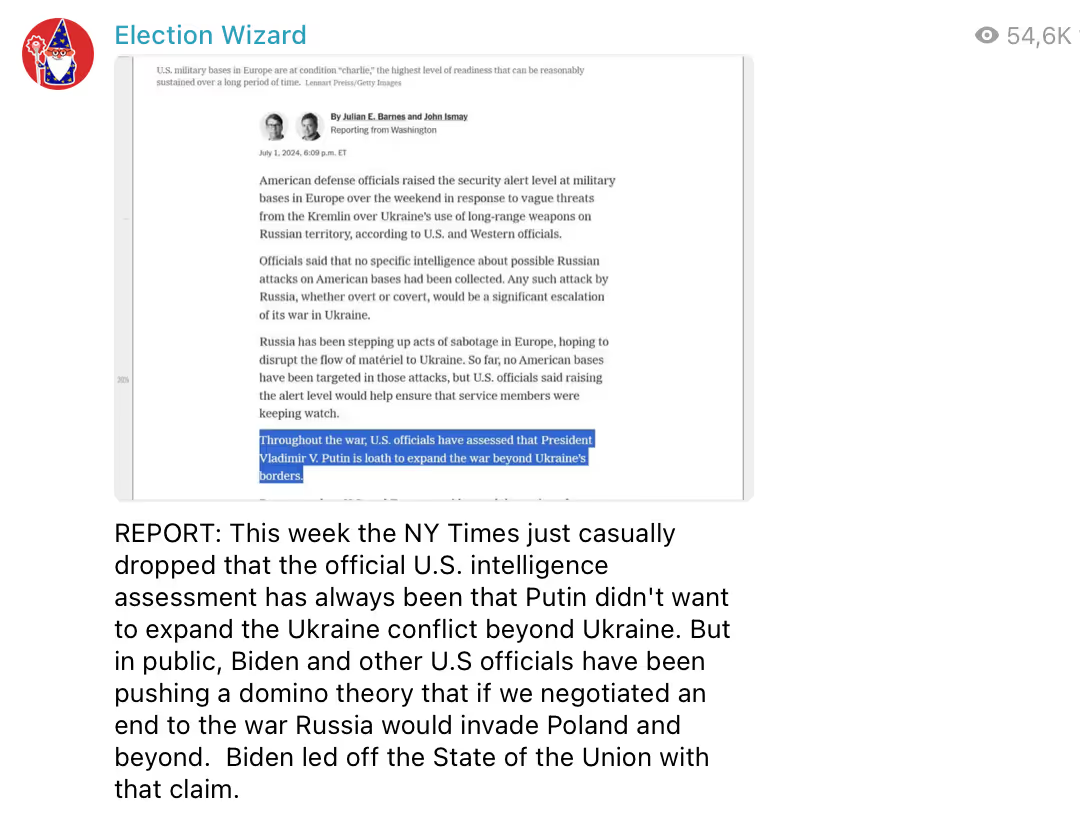
The third most popular topic, comprising approximately 14% of the content in this group, focuses on COVID-19 vaccines, public health policies, and related controversies. This includes questioning vaccine safety, criticism of public health officials, and discussion of lockdowns and their economic consequences. Some content links climate change policies to public health measures, appealing to voters sceptical of both climate change initiatives and COVID-19 restrictions. This topic also includes criticism of gender transition and abortion issues (2%).

Right-wing and Conspiracy
The second group of channels aims to create an alternative worldview where official information sources are portrayed as unreliable, while conspiracy theories and fringe ideas are presented as hidden truths and contrast with 'mainstream' media. This raises issues of covert influence on the democratic process, attempts to control freedom of speech, and conspiracies by elites against citizens (specifically, the white conservative population). Also these groups preliminary spread right-wing viewpoints, several groups aligned with the Groyper group.
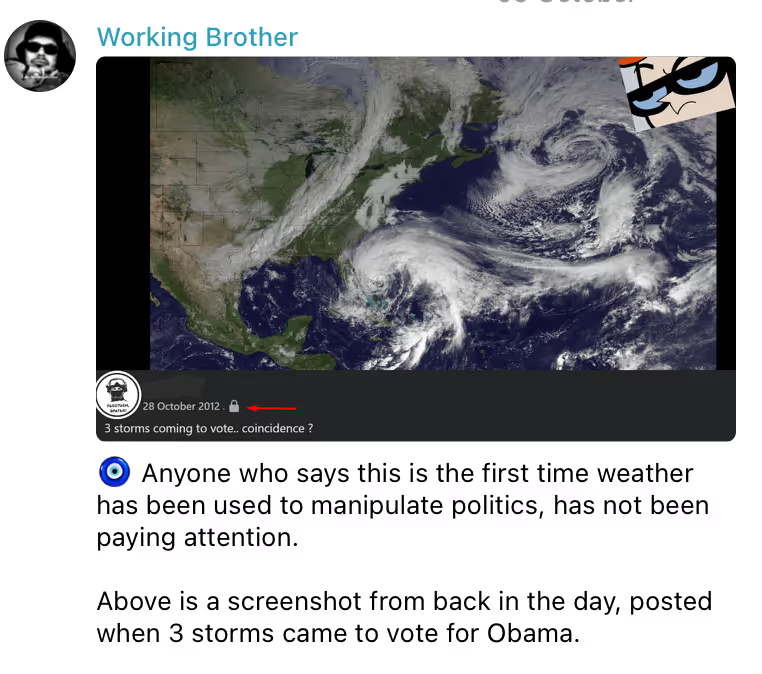

Just like the previous cluster, the first topic (45% of the content) is dedicated to the US elections. 9% is devoted to geopolitics, used to promote conspiracy theories and hinting at hidden motives behind official versions of international incidents. Many posts that are related to Israel and jewish people have an antisemitic focus. Six percent actively promotes vaccine scepticism, 5% makes claims about manipulations in financial markets and hidden economic crises, and there's also a religious topic (3%) that uses religious texts and ideas to support conservative political views. Another 10% covers miscellaneous topics that may be used to subtly introduce an alternative worldview, criticise the “system,” and encourage being different from the majority, promoting otherness, while at the same time trying to alleviate feelings of loneliness.


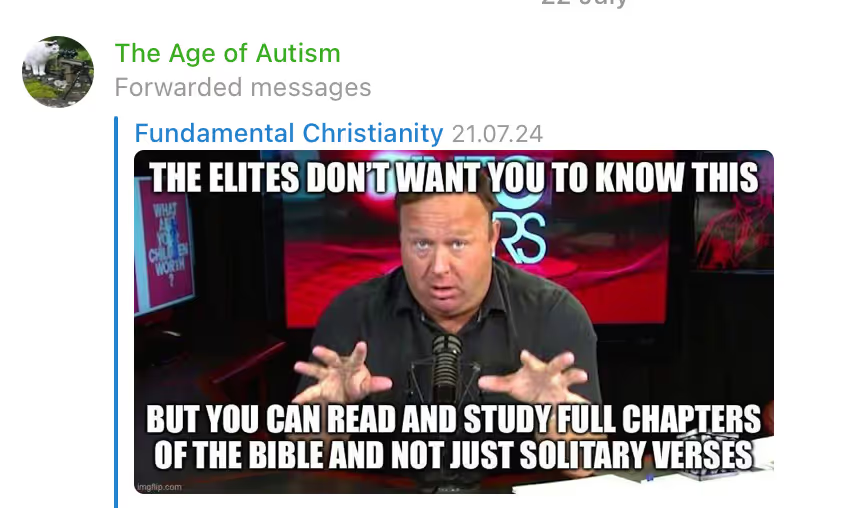
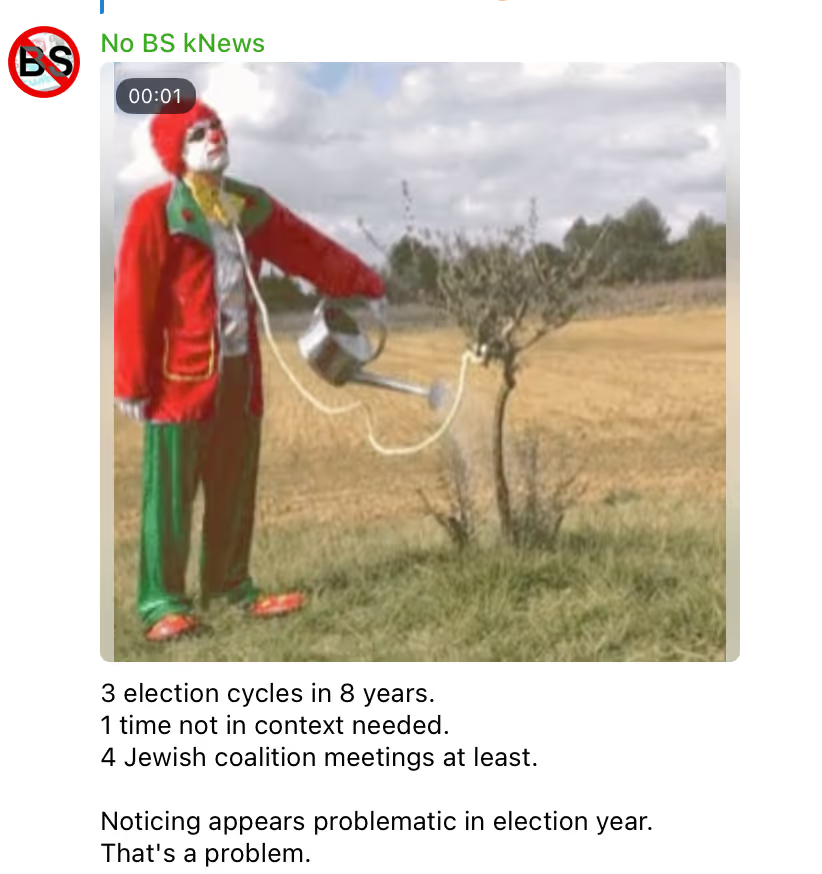
International Politics
Third group focuses on geopolitics. One of the main topics covered by this cluster is the war in Ukraine (25%). This topic is saturated with news about military actions on the Russian-Ukrainian border. Although the combat operations are often described from both sides, Russia is portrayed as a reluctant participant in these events due to Western policies, which align with narratives disseminated by Russian media. The successes of the Russian armed forces are highlighted, such as the destruction of Ukrainian soldiers or the capture of strategic locations, while Ukrainian troops are accused of atrocities against civilians on Russian territory and attacks on Russian cities. Furthermore, Russia is depicted as an active player on the international stage, entering into agreements with other countries and being viewed as a strategic partner for Middle Eastern and Asian countries.


Another 25% of the coverage focuses on Middle Eastern conflicts with an emphasis on Israel. Overall, the reporting on the conflict in this news shifts from a neutral stance to a clear anti-Israel bias. Israel is mostly presented as an aggressor poised for escalation, while its adversaries (especially Hezbollah) are portrayed as strong and capable of resistance. The news emphasises civilian casualties and destruction caused by Israeli actions, which may contribute to the formation of a negative image of the country.
Russo-Ukrainian War
Nearly half of the content in the fourth channel group focuses on the war in Ukraine from a Russian perspective. About 32% covers military operations and political dynamics, portraying Russian forces as effective and defensive while depicting Ukrainian forces negatively. This content often highlights Russian troops' advancements, successful strikes on Ukrainian positions, and the "liberation" of settlements - a term used to frame Russian territorial gains positively. It emphasises Ukrainian losses and alleged violations, questioning their military leadership and criticising Western support.
Approximately 15% address diplomatic aspects, contrasting the current situation with Trump's approach and presenting debates on Ukraine's financial support as a key US election issue. Another 3% highlights Russia's growing cooperation with Asian powers, particularly China, as a counterbalance to Western influence. The second major topic (20%) concerns the Middle East conflict, sympathising with Palestinians and criticising Israel, often drawing parallels with the Ukraine situation to critique Western approaches to different conflicts.
How Narratives Migrate
Apart from highlighting topics of their interest, all channels within the network are vulnerable to Russian propaganda. Such exposure leads to reproduction of Russian narratives that feature disinformation about various issues: Russo-Ukrainian war, NATO, or freedom of speech. We devote this chapter to cases of narrative migration from Russian propaganda outlets to American Telegram channels. We chose several prominent Russian narratives as a base for exploration and looked closely at how they are featured in the network of English-language Telegram channels.
“NATO mercenaries are already taking part in the Russo-Ukrainian war”. Russian propaganda often uses the portrayal of “foreign mercenaries” in Ukraine. It has two main goals: to demonstrate that “NATO forces are already deployed in Ukraine” (therefore, the logic of “war against NATO” is justified) and to highlight the greediness of these “mercenaries” (as if they are interested in money only and do not have any morality). For example, REN TV highlights that “mercenaries” have been an instrument of the Ukrainian government since 2014.
Another propaganda outlet, Ukraina.ru, portrays the “mercenaries” in a broader narrative of “the war on terror” – it states that some foreign soldiers had been fighting in the Middle East on the side of the “terrorists” (without naming a particular organisation). The American Telegram channels adopt the “mercenary” narrative: a pro-Trump blogger Vincent James used the death of an American who served for Ukrainian army, Nicholas Maymer, as the proof that “US troops are engaged” in the war. Another pro-Trump channel, The American Majority, frames the presence of foreign volunteers in the Ukrainian army as “mercenaries”. The truth in this context is that Ukraine has a separate official unit called the International Legion. It clearly states that a person who joins the unit will become an official legal combatant of the Ukrainian army.
“The West has huge issues with freedom of speech”. Another case occurred within a cluster of channels that write about American internal issues. The case is related to concerns about “censorship” and “attack on freedom of speech”. Among such topics was the arrest of Pavel Durov, particularly the framing of it as “censorship” attempts. Such a reaction is similar to Russian propaganda. Here is a brief selection of how Russian media framed the arrest: “Durov case shows Western approach to freedom of speech”, “degradation of freedom of speech institution in the West”, “Pavel Durov's arrest scared those who defend freedom of speech on the internet”. English-speaking sources in Telegram incorporated such narratives. For example, a channel The Vigilant Fox linked the arrest to French “censorship laws”. Another channel, KanekoaTheGreat, implicitly accused the West of censorship, mentioning that in 2014 Durov left Russia “refusing to censor content and share user's private information”. A channel Zeee Media claimed, referring to “sources”, that the US government made orders to target Durov due to his refusal to “censor criticism of Ukraine”.
“Rothschilds bought out Ukraine”. On September 14, channel Very Reasonable Information posted that the Rothschild family is influential in a “shadow government” of Ukraine, buying a big portion of Ukrainian assets since 2014. The Ukrainian Revolution of 2013-2014 in this post is framed as a “neo-Nazi coup”, which is a direct citation of Russian propaganda narratives. Moreover, the narrative on Rothschilds involvement in Ukrainian affairs is exaggerated by Russian propaganda sources (here is an example of an article by the propaganda outlet Ukraina.ru that reproduces the same narrative about the Rothschilds’ ties to Ukraine).
“Ukraine does not have sovereignty”. On September 26, channel TheNebulator published its own take on what is known as Zelenskyy’s letter to Trump with a request to meet in person. The author wrote that Ukraine “is pretending it's an independent, sovereign country with rights and agency (LOL) and not... whatever this is”. Such an approach on Ukraine’s sovereignty is an echo of Russia’s position regarding not only Ukraine, but most of the countries within the EU, NATO or other organisations with, as Kremlin puts it, “anglo-saxon” influence. For example, in 2023 Dmitry Peskov stated that Ukraine’s sovereignty is an “abstract” term and that Ukraine does not have neither sovereignty nor will to establish it. Putin made a relatively similar claim regarding Germany. In Russia’s implicit view, a “sovereign state” is the one that opposes “Western influence”. A clear example is Russia Ministry of Foreign Affairs' approach to African countries that had pro-Russian juntas in command. The minister, Sergei Lavrov, said that Russia would “facilitate strengthening of African states’ sovereignty and security”.
“Ukraine is a neo-Nazi country”. Another example of Russian narrative migration in English-language channels is their concern with Ukraine being a safe haven for neonazis and successing the heritage of the Third Reich. In this case, a channel Strategic Culture Foundation compares Ukrainian incursion to German tactics in World War Two, stating that “the Nazi Wehrmacht tried to break out in Kursk as a way to divert from battlefield losses elsewhere on the crumbling Eastern Front” and making parallels with the contemporary war. Another case, widely popular in “alternative news” channels, is related to the 3rd Assault Brigade of the Ukrainian army (previously known as Azov Battalion, later transformed to Regiment). Here, a channel Brian Berletic's New Atlas called the unit “Nazi-infested”. Another channel calls the unit “a battalion of neo-Nazis with a long history of crimes”.
Channel Gaganauts of Geopolitics claimed that “neo-Nazi soldiers” were among key advantages of the Ukrainian army and, as of March 2024, they were “eliminated by Russian forces”. Because of this, the channel goes on, “Ukrainians are being trained for merely a few weeks and being sent into the meat grinder”. Such focus particularly on the 3rd Assault Brigade is among key features of the Russian propaganda since 2014 as it framed most of Ukrainian volunteer combat units as “nationalistic/Nazi battalions” that oppress “Russian-speaking citizens of Donbas”. Although during early stages of existence there were several right-wing activists in Azov, however they were a minority. Moreover, as Azov turned from a volunteer battalion to a regular unit of the National Guard of Ukraine, the far-right in the unit became even more marginal, since there are recruiting procedures based on the national legislation. Additionally, there are representatives of national minorities serving in the brigade.
How the Network Approaches the US Elections
Apart from being exposed to Russian propaganda, the network we identified has a distinct anti-Democratic position – it criticises policies of Biden administration and the campaign of Harris. In this chapter, we explore the network’s approach towards the elections.
Donald Trump is often portrayed as a victim of potential threats and security concerns, while also being presented as a strong campaign figure with significant supporter enthusiasm. For example, articles mention Trump holding rallies, leading in polls against Kamala Harris in certain states, and being a victim of assassination attempts. The channel The Vigilant Fox describes the day of the first assassination attempt as the day when “America woke up”, citing an American conservative journalist Mike Adams.
Also, channels expose Trump's opponents. A channel ToreSays®+ claims that “the media” incite violence against Trump. Another channel, ZeroHedge, states that Trump's assassin was released to “complete the job”. Conduits have the same opinion on Trump. In their coverage, he is consistently depicted as leading in the polls. The assassination attempts portray Trump in a heroic way, with some channels emphasising that the perpetrator was a "pro-Ukrainian activist".


President Joe Biden is generally depicted in a negative way. Channels question his cognitive abilities and criticise his handling of challenges, such as natural disasters or policies towards the US-Mexico border. In this case, American blogger Benny Johnson praises Trump’s ad that allegedly exposed Biden’s “dementia”. Another topic among “alternative” American channels is the framing of the US-Mexico border crisis as “invasion by illegal migrants. The channel Gateway Pundit claims that during the Biden administration the USA was “invaded under the watch of Border Czar Kamala Harris”. Propaganda conduits share this opinion: tThe Biden-Harris administration faces criticism for both foreign and domestic policies, including the situation in the Middle East, the war in Ukraine, racial tensions, and the migrant crisis. The channels emphasise US spending on foreign policy in the wake of domestic issues, framing it as neglect of internal problems. They often mocked Biden, pointing out his age and alleged dementia, suggesting he is unfit to govern.

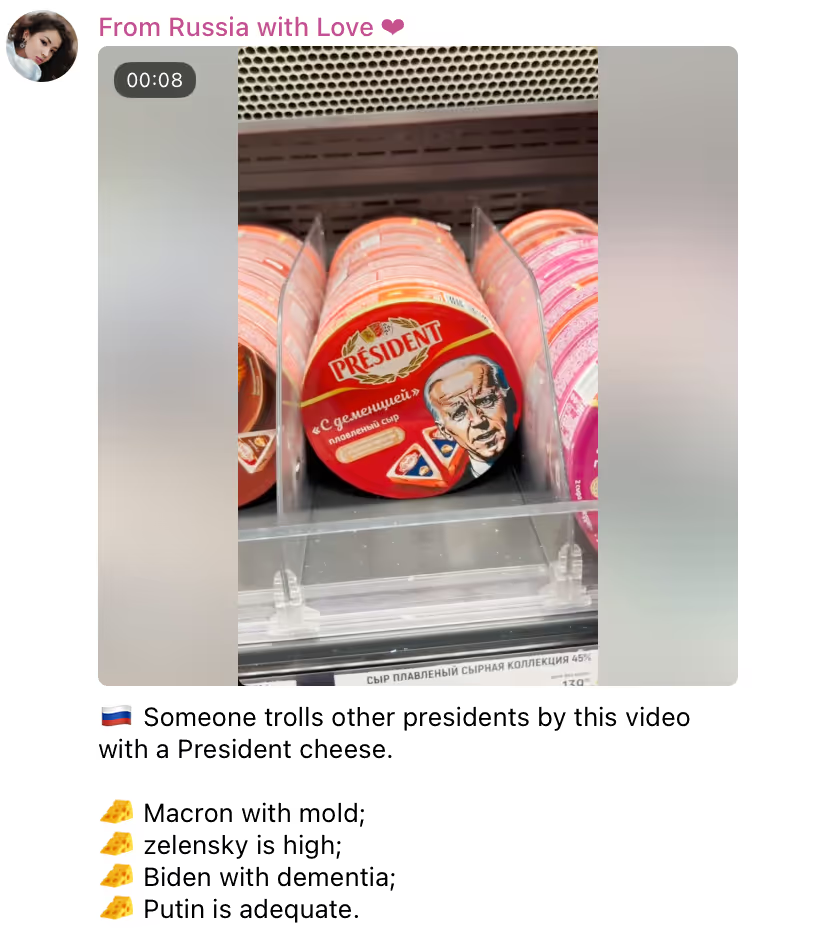
The Democratic candidate and the vice president Kamala Harris is frequently portrayed critically as well. Channels tend to highlight her perceived gaffes, question her competence, and suggest she struggles with public approval. Apart from ironically calling her a “border czar” as mentioned above, the channels say that she does not have an economic policy program, expose her racial identity, and downplay her popularity ratings. Channels featuring conspiracy theories go further – for example, citing Trump that because of Harris 300 000 migrant children were forced into “sex and labour trafficking”.

Also, content related to the election includes issues of migrants and border security, discussions of free speech and social media regulation, the influence of IT giants on democratic processes in the USA, economic policy and taxes, problems with voting procedures and concerns about vote falsification and theft. Freedom of speech is a particular concern: channels directly cite Russian officials that there is a “witch hunt” and “political inquisition” against “dissenters", or pose themselves as the ones “on the front lines of the battle for freedom of speech”.
Additionally, the channels employ the foreign policy topic to criticise the Democrats. Particularly, the Israel-Hamas war and the Russo-Ukrainian war are used as instruments to criticise the Biden-Harris administration’s policies. They emphasise the ineffectiveness or flaws in White House’s approach to these conflicts. Posts contrast the current situation with former President Trump's approach, suggesting that his return to power could change the course of these conflicts, employing an argument “during Trump nobody invaded nobody”.
Additionally, debates around financial support to Ukraine are used as a key election campaign issue, with criticism of large expenditures against the backdrop of domestic problems in the United States. This position of a G3 News channel is an indicator of the cluster’s stance on foreign policy – that the USA “escalates the war in Ukraine” and “pushes war with Iran”. Notably, 31 conduit channels highlighted Trump's intent to end this war, although this is framed as stemming from his realisation that the U.S. lacks the resources for prolonged warfare and ultimate victory. Additionally, Trump's vice-presidential candidate is portrayed as being against aiding Ukraine.
Channels within the international politics cluster focus on the uncertainty regarding election outcomes and political polarisation. They express scepticism about the significance of elections. The channels demonstrate a critical approach towards the US political system, emphasising its inefficiency in preventing escalations around the world. However, as for the candidates, Trump is portrayed in a more positive light than Biden and Harris. They mention his connections to Elon Musk and intentions to improve the global situation by resolving world conflicts. At the same time, they criticise the policies of the current American administration. Framing the election, the channel surf_noise_eng stated that Ukraine looks “for a new patron”. A channel european_dissident attempts to downplay Russian influence on the elections, calling the discussions around it a “never-ending paranoia”. Another channel, resistancetrench2, calls the elections a “satanic ritual”. Pro-Russian channels share this view. They are both sceptical of American democracy and critical of the current administration, emphasising US decline and internal polarisation. They also look at candidates through a foreign policy lens and portray Trump as a promising candidate to end the war.
What Pro-Kremlin Media Write
Although Russian propaganda shares American “alternative” channels anti-Democratic views, it does not necessarily choose a pro-Trump position. Rather, propaganda outlets might choose Trump over Harris as “lesser evil” for Russia, but at the same time they show scepticism that the potential president’s policy towards Russia would be favourable for the Kremlin.
At the same time, Russian propaganda has reliable conduits that can either amplify its narratives or directly retranslate fakes about Ukraine that Russia generates – it might be the above-mentioned case with Michael McFaul, narratives like “Ukraine launches missiles at itself” or justifications of the Russian invasion as a “preventive strike”.
Propaganda and the elections
Russian propaganda mainly focused on highlighting Donald Trump depending on the period: in June they mostly focused on news about Trump’s case in the court, in July – on the assassination attempt, in August they discussed his geopolitical agenda, and in September they mostly focused on the second assassination attempt and on his participation in the debates.
Ukraine is the second dominant topic related to the elections. Russian sources discussed how a new American president would approach the war in Ukraine. They also mocked Ukrainian president Volodymyr Zelenskyy regarding his peace plan and discussed potential American plans such as “under Trump NATO won’t be expanding east” or “what happens if the West decides to allow Ukraine to strike Russia with Western missiles”.
Middle East politics have been a third topic of interest for Russian propaganda, but it mostly consisted of reporting the events in the regions: Israeli-HAMAS war, relations of the US and Israel with Iran, and growing tensions on the Israel-Lebanon border. 41% of the content on the Middle East mentioned Trump while 21% mentioned Harris. This content mostly contained citations of both candidates on this matter.
Some of the topics had a “seasonal” nature, like the content related to Hunter Biden and his court case in June when he was found guilty of illegally acquiring a weapon. There was another topic that emerged in late August – it was related to the arrest of Pavel Durov, founder of the Telegram messaging app. Propaganda outlets made wide conclusions regarding this case, accusing the West of being “undemocratic”. These accusations went beyond the case itself and were projected onto the US – in this logic, the US has huge issues with freedom of speech and this is why the elections are not purely democratic.
As for the approach towards the presidential candidates, Russian propaganda swings between pro-Trump and indifferent positions but never chooses a pro-Harris stance (despite recent Putin’s words of support towards Harris). For example, propaganda media Readovka tends to highlight pro-Trum position more, citing Elon Musk’s words “It would be the end of America” if Harris won. Another blogger’s channel, sanya_florida, employs an anti-Harris position, calling states of New York and California “Democratic garbage dumps”.
However, neutrality and indifference have a presence as well. Pro-Kremlin blogger politadequate claims that both American parties have a lot of russophobic members within, so the policy won’t significantly change in the future. Ex-president Dmitry Medvedev stated that, after all, Trump is a “systemic candidate” despite his alleged “non-systemic” behaviour. He summarised his opinion on future US-Russia relations as “sanctions forever” until “the dissolution of the USA”.
Methodology
During the observation period from June 1 to October 2, we scraped 300 Telegram channels, gathering 315K publications. In the first stage, we collected data from 186 sources based on a predetermined list of Telegram channels 'Novaya Gazeta. Europe' revealed as the English-language sources disseminated Russian propaganda narratives. After filtering out irrelevant sources, we identified 34 channels that covered American topics. In the second stage, we gathered data from 134 additional channels that were reposted by these 34 channels and then merged the two datasets.
Also, we collected Russian propaganda outlets’ content related to the US elections. During the observation period (June 1 – October 7) we sourced 9471 publications about the US elections from 46 Russian propaganda sources including media, war correspondents, officials and bloggers. We call them “propaganda” due to their reproduction of official Russian narratives like justifying the invasion of Ukraine or blaming the USA as the “sponsor of world terror”. Within the content we identified 29 subtopics.
We employed a topic modelling technique and clusterisation to distinguish different types of channels, as well as for discovering common patterns in large collections of texts. This method facilitated the identification of primary document clusters (document groups based on the similarity of their contents). Short summaries were generated for each cluster with a GPT 3.5-Turbo language model. A combination of these techniques provided our research team with a high-level overview of online discourse around all four topics.
To compare the narratives with those of Russian propaganda, we collected data from 46 Telegram channels of various types: Telegram media, conventional media, bloggers, officials, and war correspondents, over a similar period. In approximately 10K posts from these media, Biden, Trump, Harris, and the topic of the U.S. elections were mentioned.

.svg)








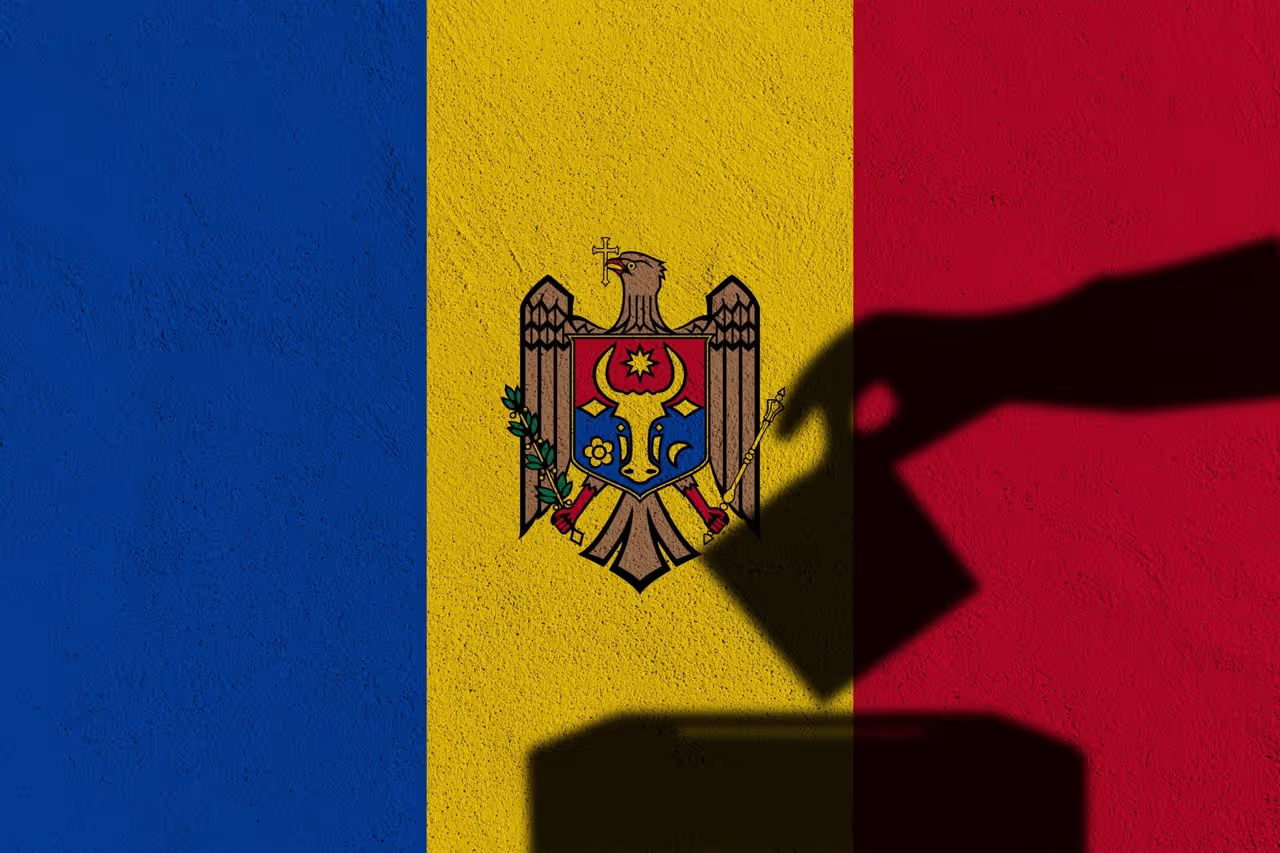

.avif)






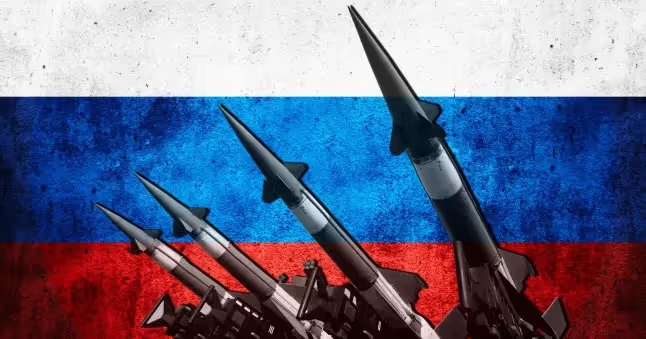
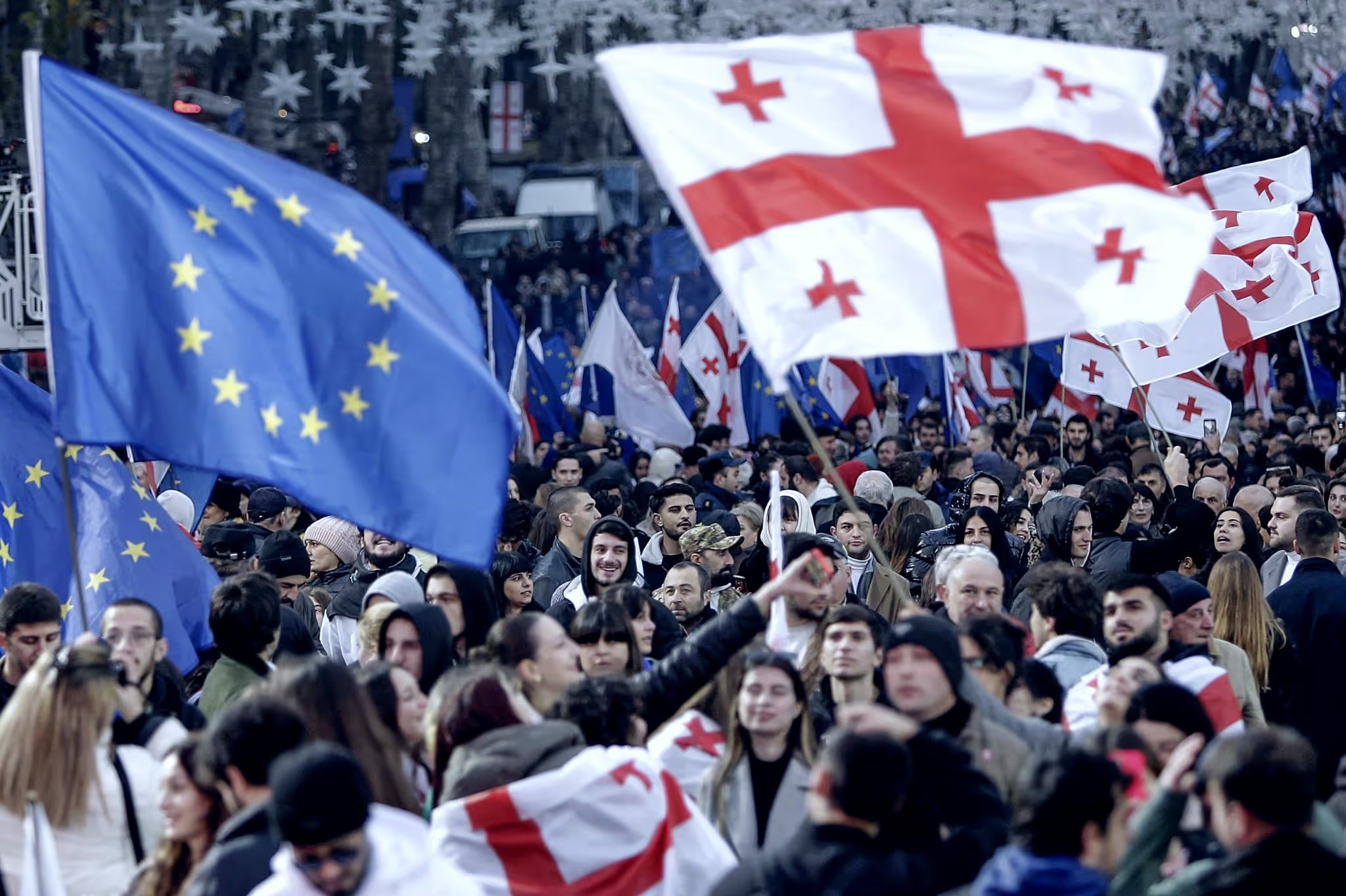






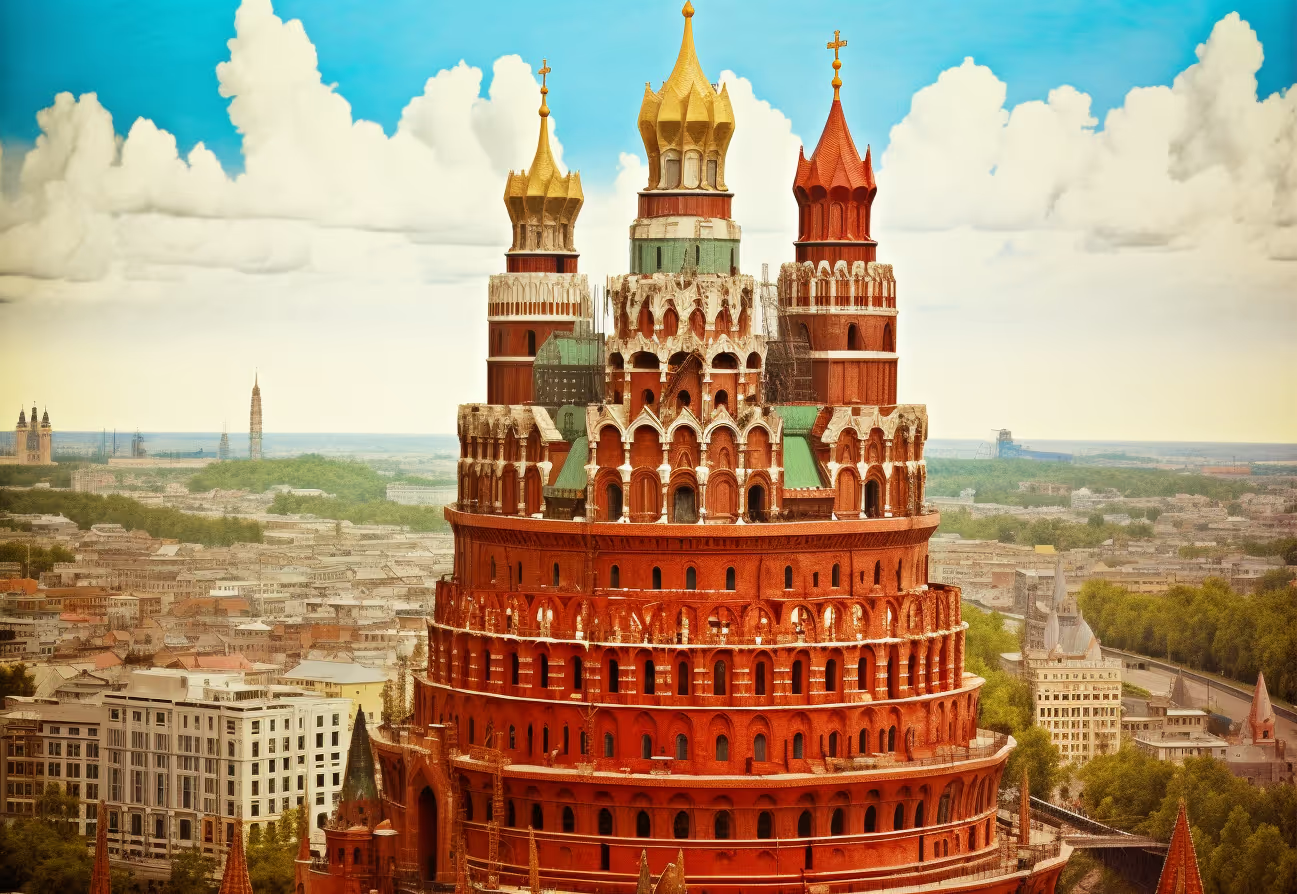
.avif)

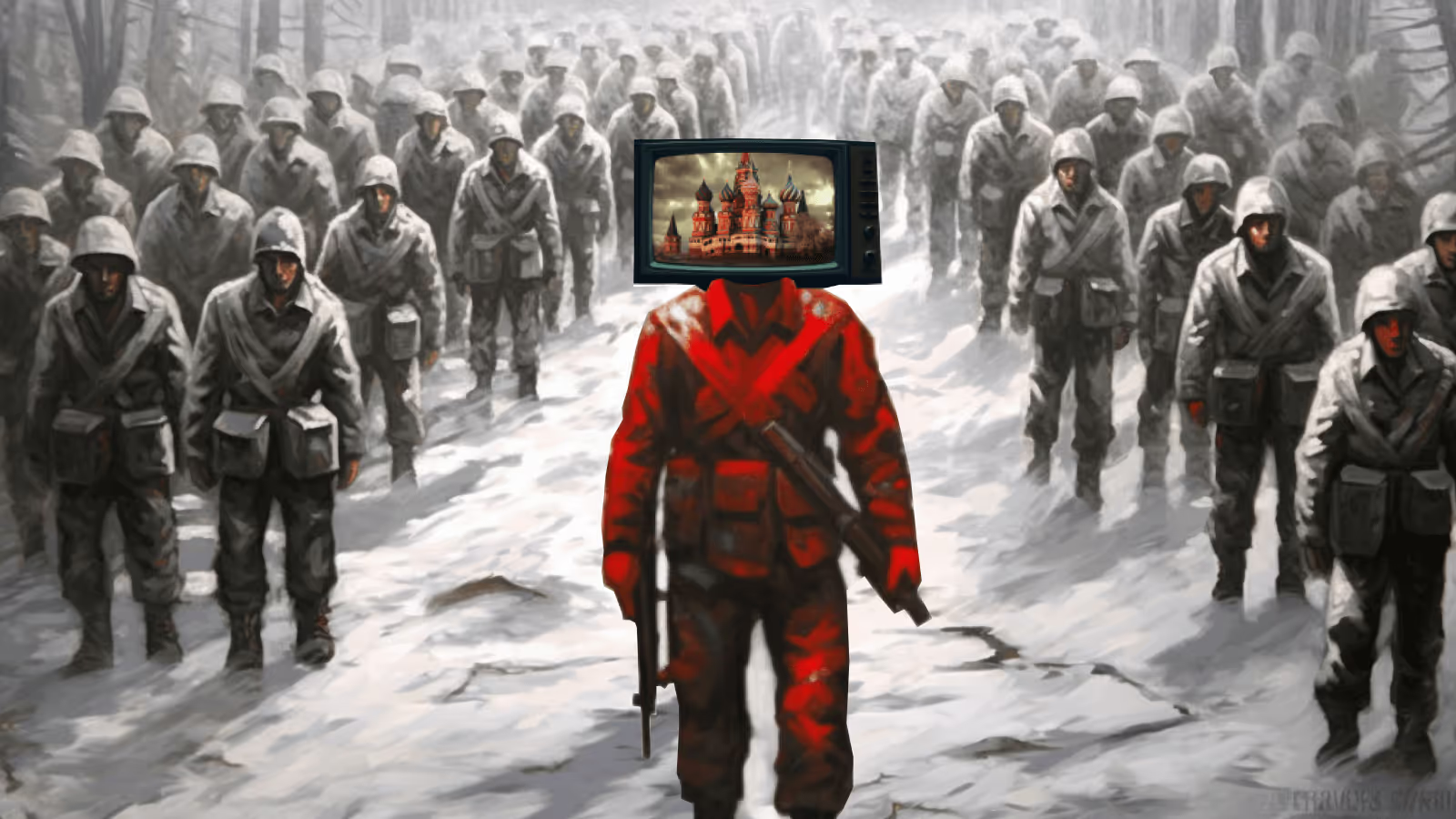
.avif)

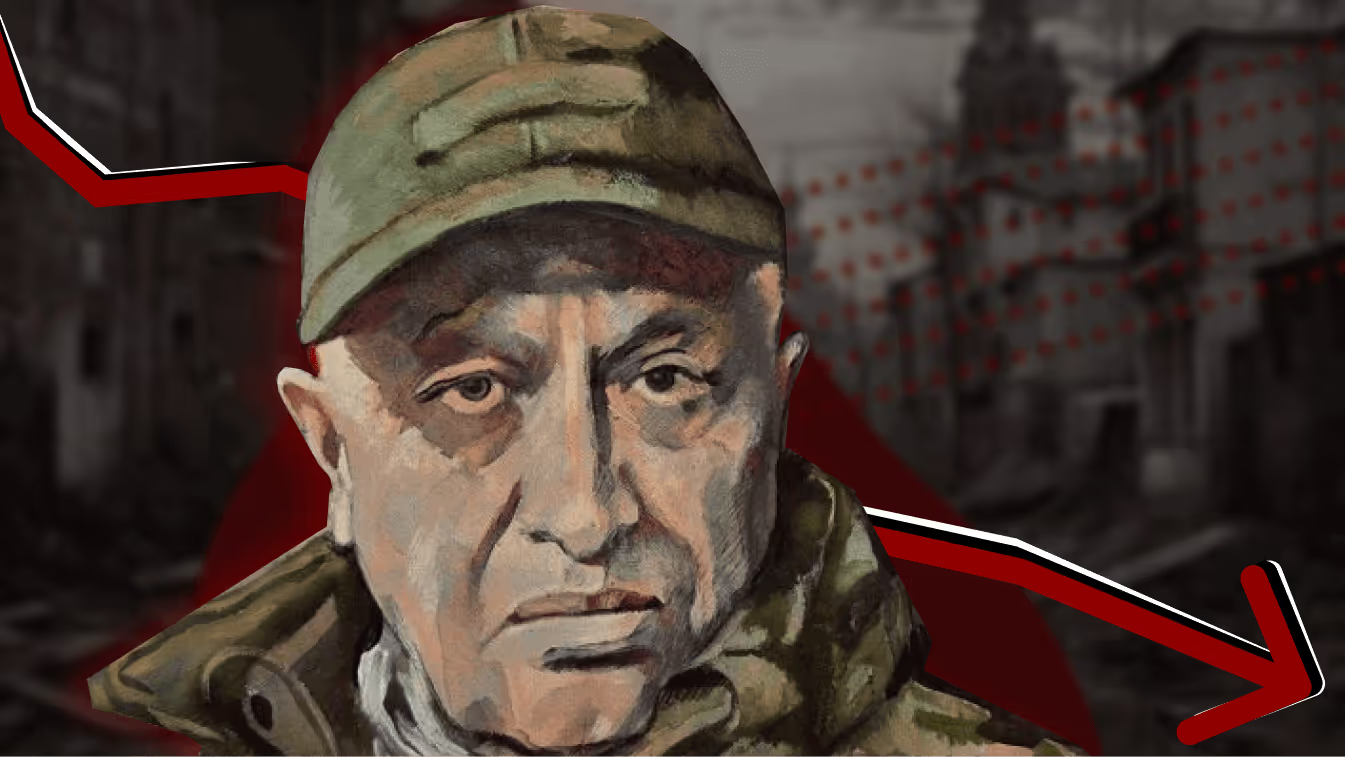

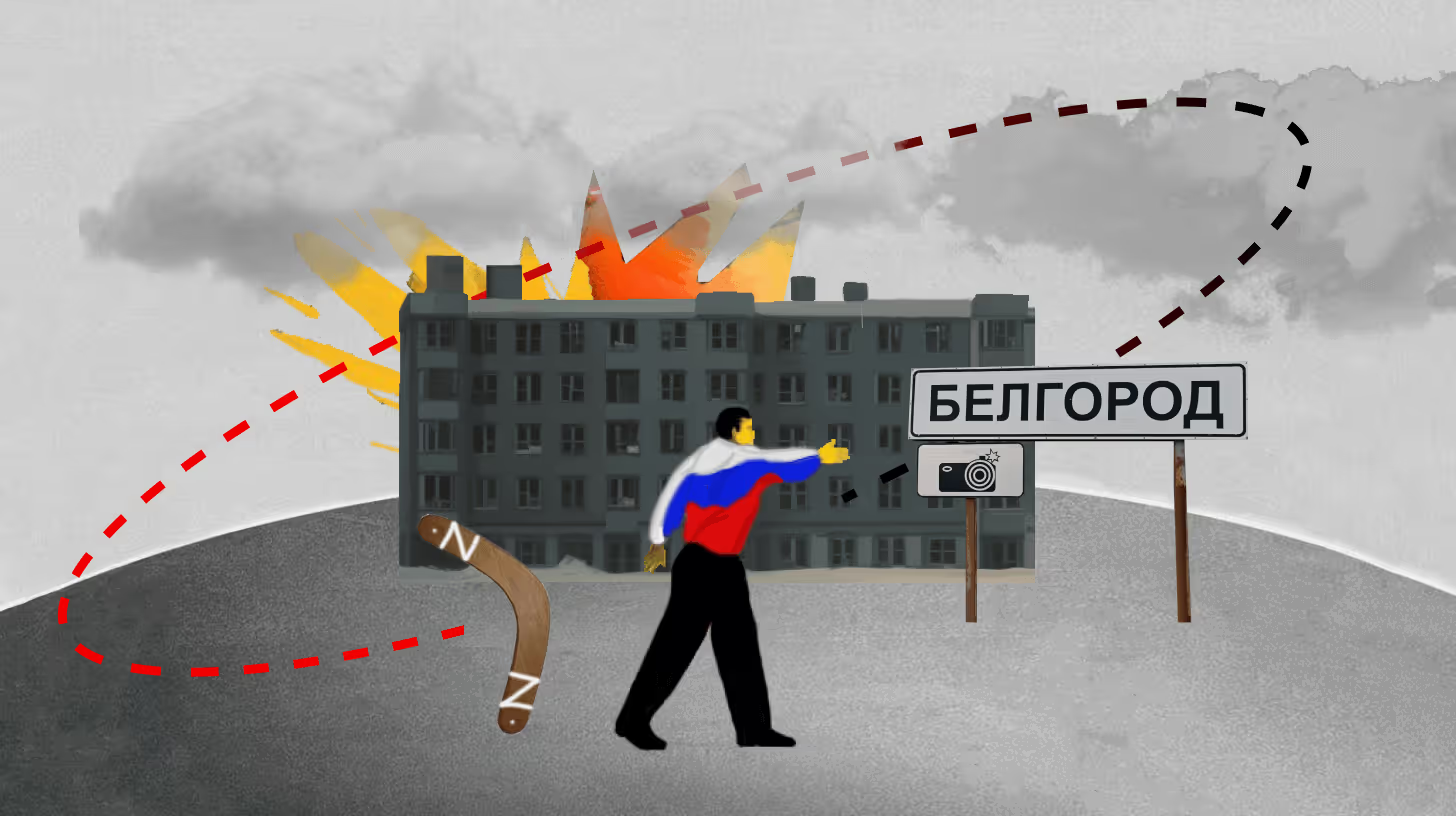
.avif)

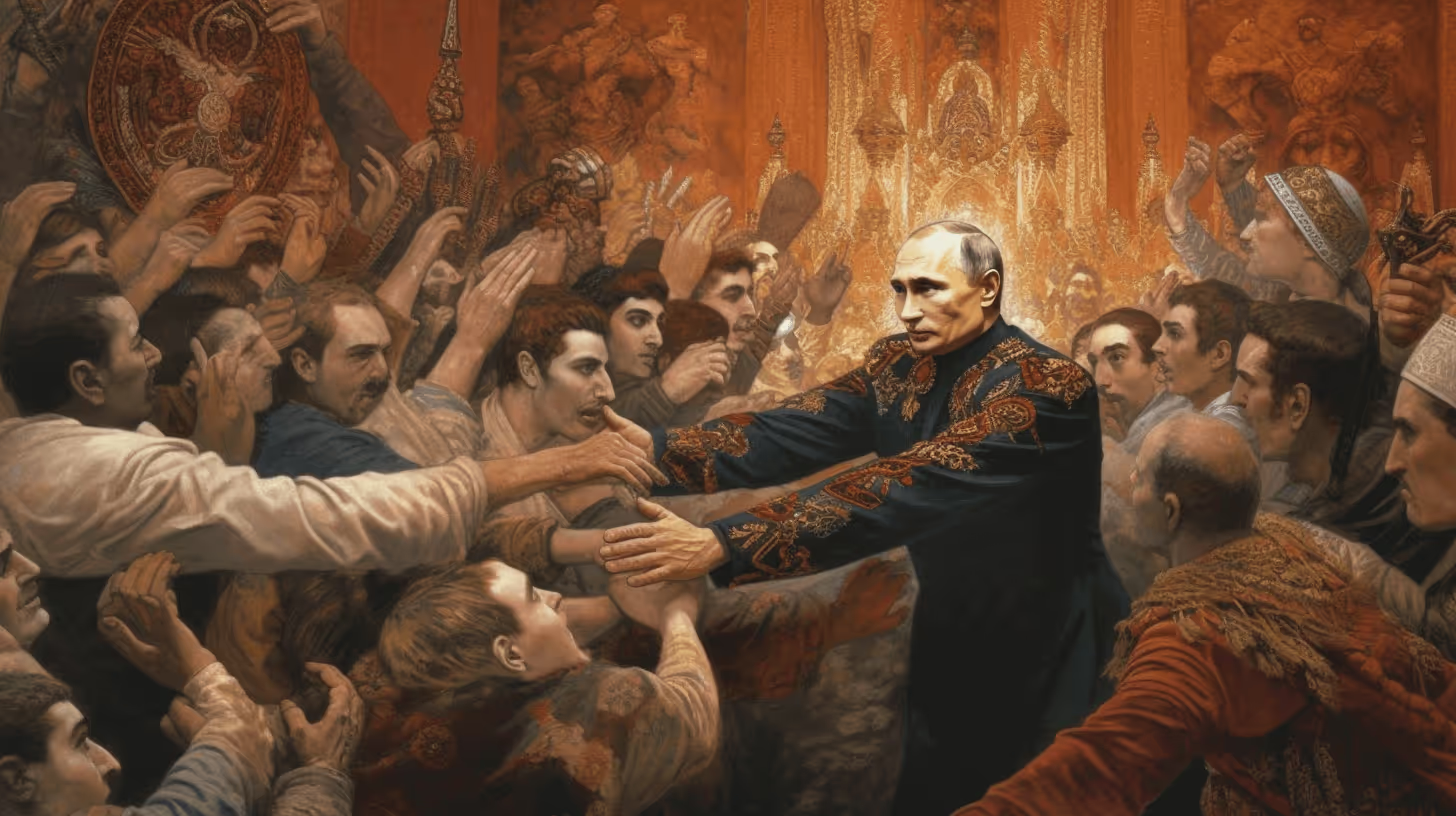
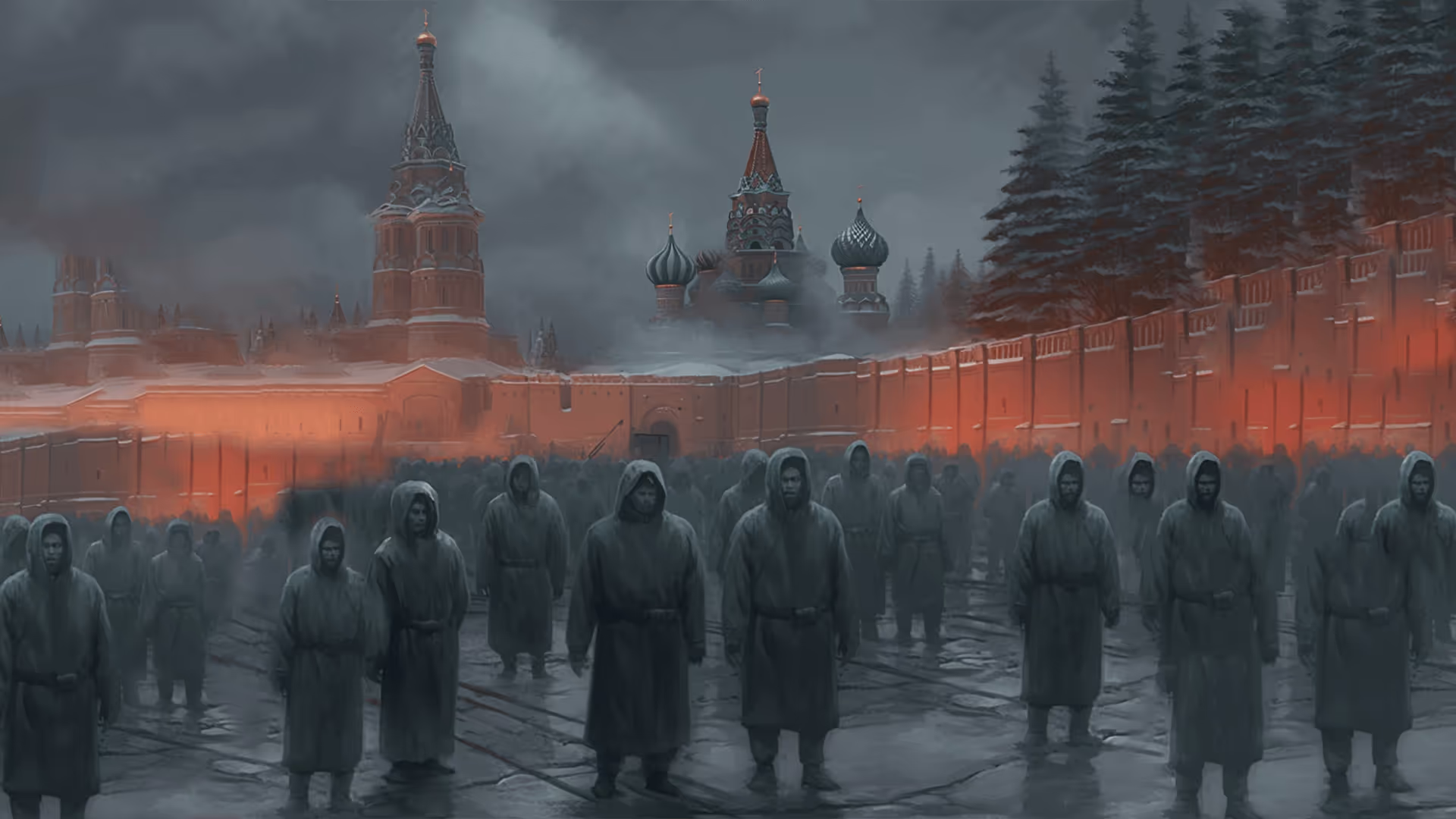

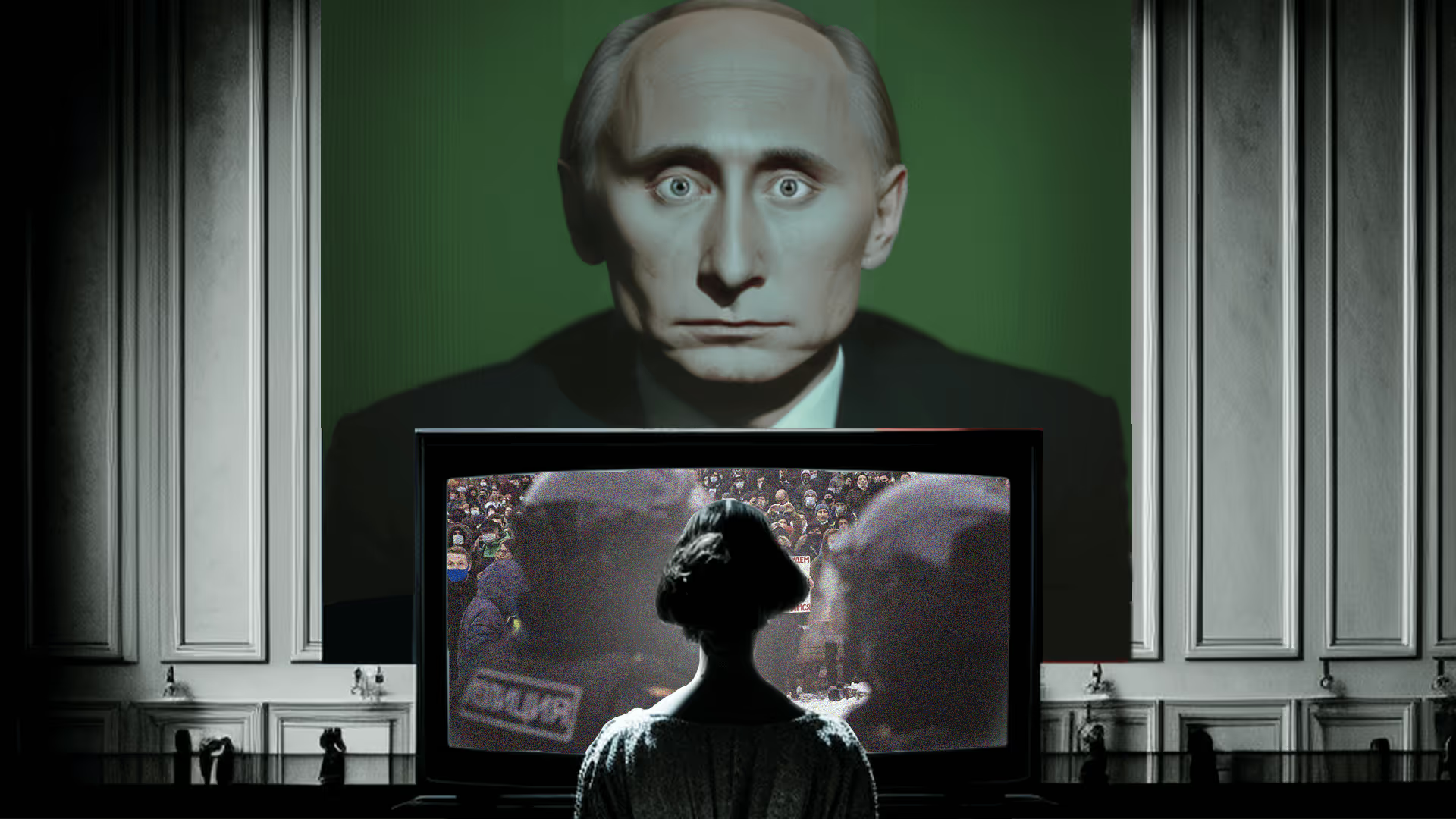



-01-2.avif)
-01.avif)
-01.avif)




-01%25202-p-500.avif)







